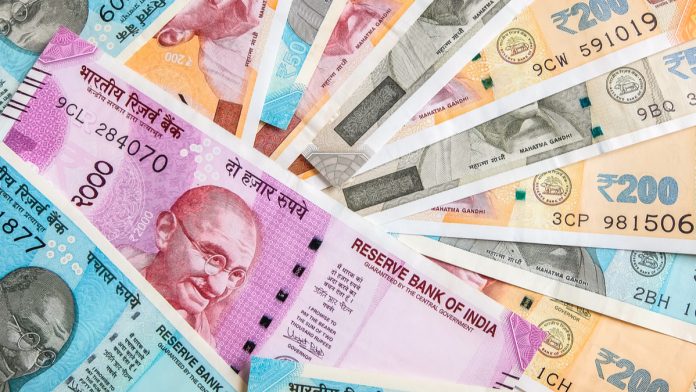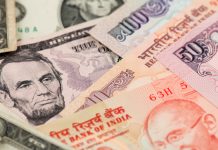- Indian Rupee (INR) rises after suspected RBI intervention
- Oil rises, and equities also rise
- US Dollar (USD) falls after strong gains yesterday
- US jobless claims unexpectedly fell
The US Dollar Indian Rupee (USD/INR) exchange rate is falling on Thursday after two days of gains. The pair rose 0.88% yesterday, settling at 83.01, trading in a range between 82.28 to 83.11, a new record high. At 15:00 UTC, USD/INR trades -0.3% at 82.77.
The Rupee fell to a record low yesterday and has rebounded higher today, most likely owing to an intervention by the Reserve Bank of India.
In addition, to dollar sales, the RBI did buy/sell swaps mainly in the December maturity.
Analysts expect that the Rupee could continue weakening, possibly to 84.50, setting up the currency for its steepest annual decline in nine years, owing to a widening domestic trade balance and soaring US interest rates.
Domestic equities closed the session mildly higher, rebounding from earlier losses.
Oil prices were pushed higher on optimism that China could ease some COVID quarantine restrictions.
The US Dollar is falling across the board. The US Dollar Index, which measures the greenback versus a basket of major currencies, trades at -0.29% at the time of writing at 112.65 after booking gains of 0.76% in the previous session.
The US dollar rallied yesterday, boosted by rising yields and comments from several Federal Reserve policymakers, who supported the hawkish stance of the US central bank. Fed official Neel Karshkari said that the Fed couldn’t consider pausing the hiking cycle when core inflation was still rising.
Along a similar tone, Fed President Bostic said that inflation is too high and must be bought under control.
Today the US dollar is falling despite US bond yields rising. US jobless claims unexpectedly fell to 214,000, down from 226,000 and below the 230,000 forecast. The data suggests that the jobs market remains resilient.
Looking ahead, there are three more Federal Reserve officials which are due to speak and could provide further clues as to the future path of rate hikes.





